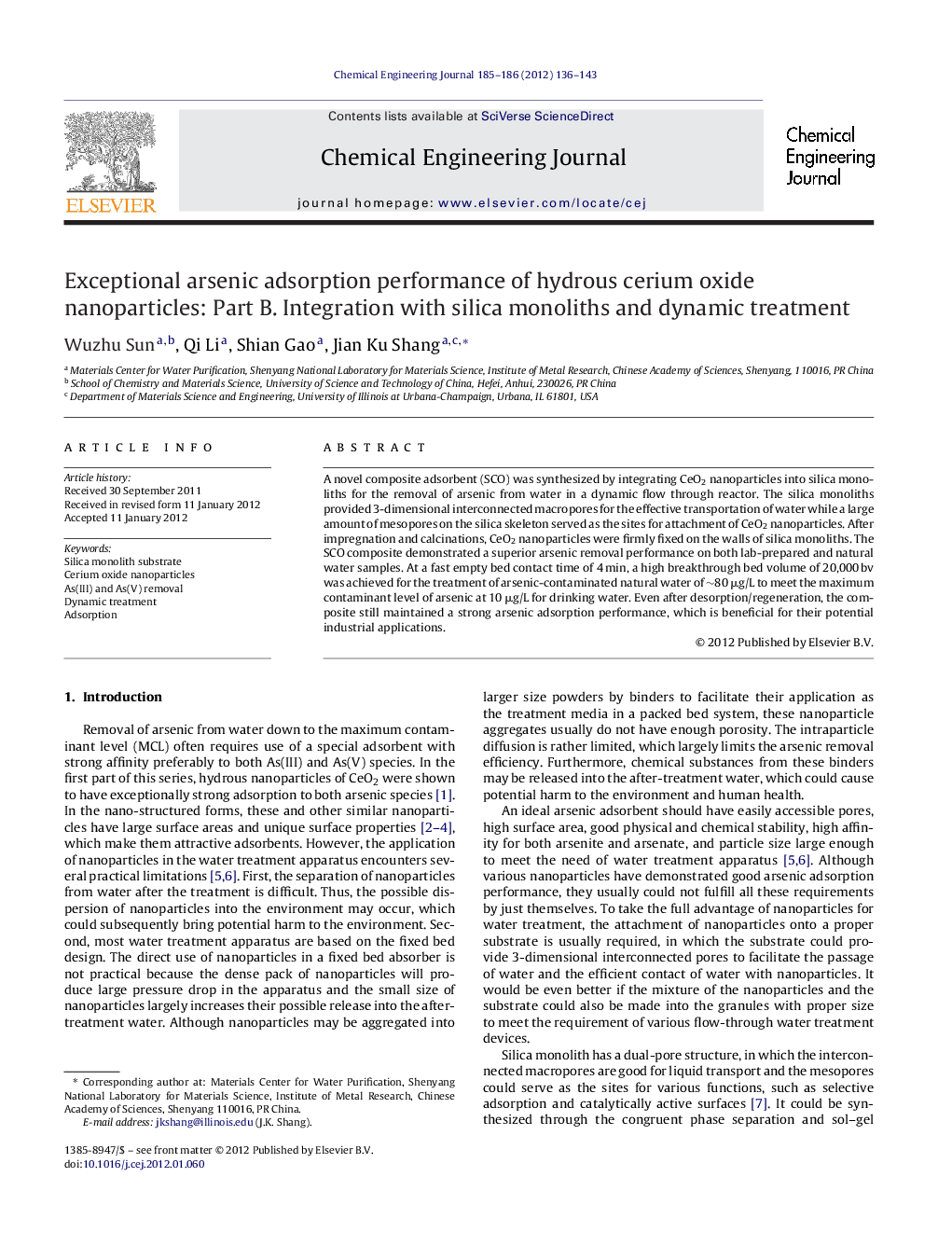| Article ID | Journal | Published Year | Pages | File Type |
|---|---|---|---|---|
| 150143 | Chemical Engineering Journal | 2012 | 8 Pages |
A novel composite adsorbent (SCO) was synthesized by integrating CeO2 nanoparticles into silica monoliths for the removal of arsenic from water in a dynamic flow through reactor. The silica monoliths provided 3-dimensional interconnected macropores for the effective transportation of water while a large amount of mesopores on the silica skeleton served as the sites for attachment of CeO2 nanoparticles. After impregnation and calcinations, CeO2 nanoparticles were firmly fixed on the walls of silica monoliths. The SCO composite demonstrated a superior arsenic removal performance on both lab-prepared and natural water samples. At a fast empty bed contact time of 4 min, a high breakthrough bed volume of 20,000 bv was achieved for the treatment of arsenic-contaminated natural water of ∼80 μg/L to meet the maximum contaminant level of arsenic at 10 μg/L for drinking water. Even after desorption/regeneration, the composite still maintained a strong arsenic adsorption performance, which is beneficial for their potential industrial applications.
Graphical abstract.Figure optionsDownload full-size imageDownload as PowerPoint slideHighlights► Silica monoliths provided 3D interconnected macropores and mesopores. ► CeO2 nanoparticles were firmly fixed on the walls of silica monoliths (SCO). ► The SCO composite demonstrated a superior dynamic arsenic removal performance. ► The SCO composite could be easily desorped/regenerated for re-use.
